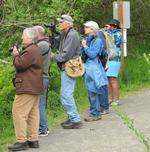Several things stand out when one watches Short-eared Owls flying around or feeding.
- One of the most obvious things is the lack of any appearance of a neck.
- Another things is the obviously flat-looking face.
This is one of the easiest features to see, because one often sees these birds as profiles silhouetted against a bright sunset sky.
While the flat rounded face is most visible when they are seen from the side, in better light it can be seen in most positions of the bird.
They remind me of a famous high speed acrobatic plane called the
Gee-Bee Model R.
That plane had a huge flat round engine
with many cylinders in a circular array, giving the front of the plane a large diameter and flat-fronted look with a short body behind it, much like our Owl.
That plane had very short wings though, and that is quite the opposite of what one finds with Short-eared Owls.
- The wings of the Short-eared Owl appear to be surprisingly long compared to body size.
The only other birds (with which I am familiar) whose wings seem "extra" long in this way, are Bald and Golden Eagles.
However, this wing-length is somewhat of an illusion. Although Northern Harriers are almost always flying
in the same area as these owls before dark, I've had the impression that the Owls wing-span is greater than that of the Harriers.
Not so, according to Sibley, who puts Harriers at 53" and the Owls at 48" wing-span. It must be the narrowness of the Owl's wing
combined perhaps with its blunt tip, which give the impression of extra length.
- Another striking feature one notices when SEOW are flying, is how deep the wing-beats are; both on the upward and the downward parts of the wingbeat.
- The size and power of the wings, relative to the small light-weight body sometimes results in the body of the bird rising up when its wings flap down,
and the body dropping down while the wings are flapping upward. The result is called a "mothlike" flight in some books because it can seem
like the bird almost bounces through the sky, especially if it wheels suddenly and straightens out again.
But to observe this, it helps to have enough light to see the body of the bird as distinct from its wings.

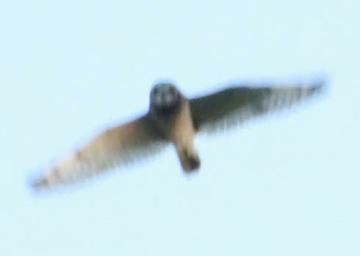 |
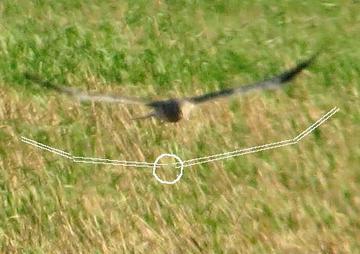 |
 |
WINGS on the DOWN-BEAT |
On the downward stroke of the wingbeat, the wings either each remain nearly stiff and straight, or else they bend very sharply
a short distance from the body. The downward stroke also goes quite far, sometimes even to the point where the wings clap together, resulting in the "wing-clapping" sound sometimes heard.
Wing-clapping is part of courtship displays, but I've seen and heard Wintering Owls do it sometimes in the proximity of other SEOW flying nearby.
|
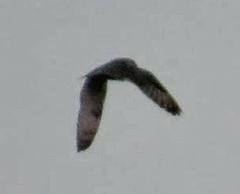 |
 |
 |
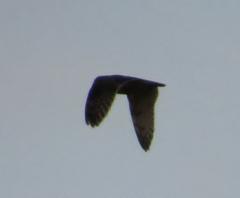 |
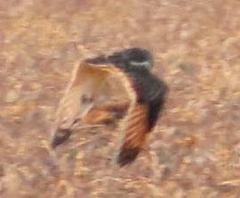 |
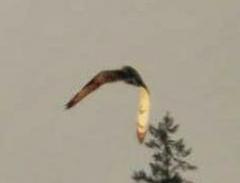 |
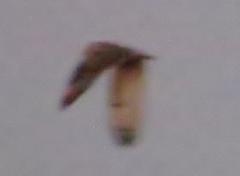 |
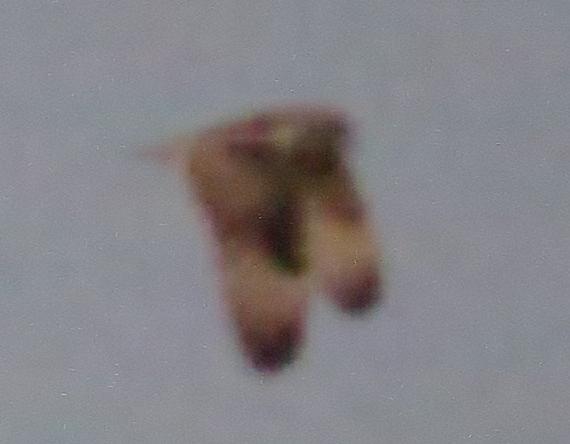 |
WINGS on the UP-BEAT |
On the upswing, the wings tend to remain almost stiff and straight, with only a slight bend a short distance from the body.
The bend goes away when the Owl glides or when it begins to hover or dive. Otherwise, while flying, the wings most often
appear to make a very deep V-shape. This is especially visible in the first three photos below
|
 |
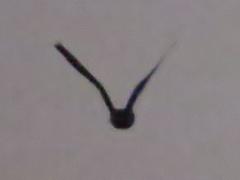 |
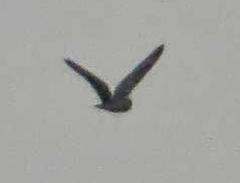 |
 |
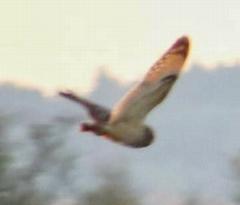 |
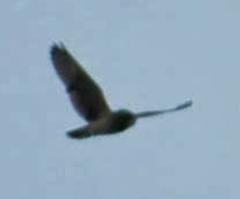 |
 |
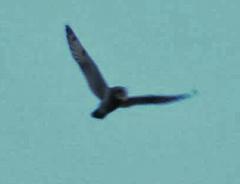 |
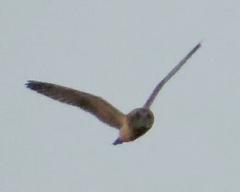 |
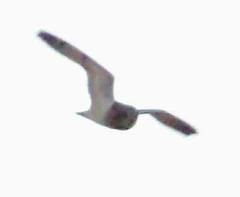 |
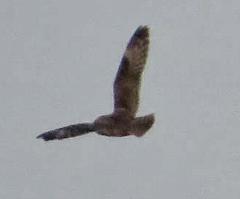 |
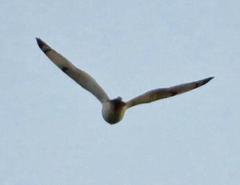 |
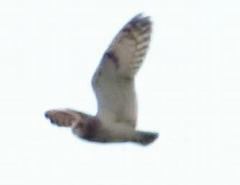 |
WINGS FLAT |
Even when their wings are flat, such as in a glide, these Owls have a quite distinctive appearance.
I love the way they hold their wings slightly below them In the first three photos below.
This "pose" is one of the few times that the wings may appear to be pointed.
You can see in the rest of this group of photos that the wings appear to be very broad out towards the ends,
and they only rarely look pointed, but rather the ends usually appear to be very rounded
|
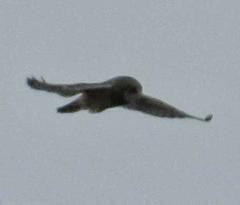 |
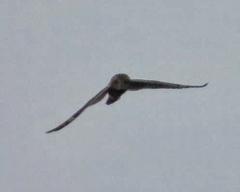 |
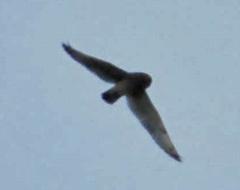 |
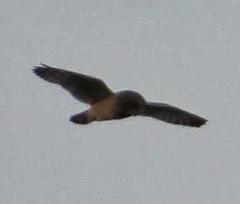 |
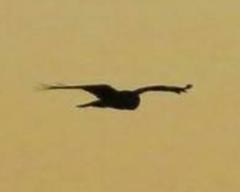 |
 |
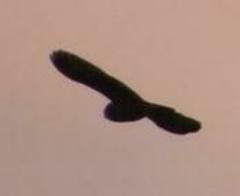 |
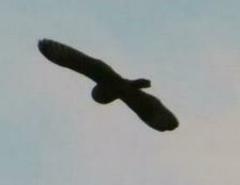 |
 |
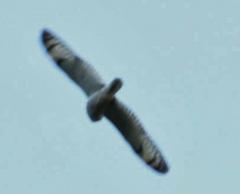 |
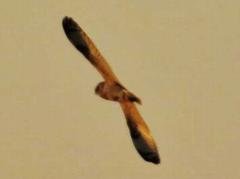 |
 |
SIDE VIEW PROFILE |
More than in any other view, the flat fronted face of these Owl shows up clearly in a side-profile view.
The absence of any neck contributes to making the head look especially large compared to the body of the bird.
The shortness of the tail is also more obvious, as is its somewhat square shape.
|
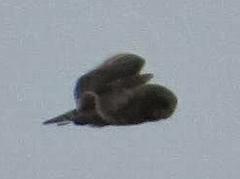 |
 |
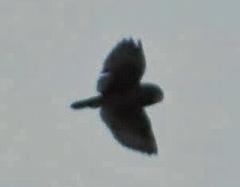 |
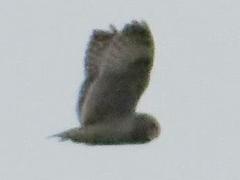 |
 |
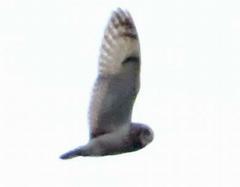 |
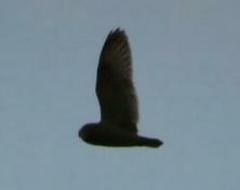 |
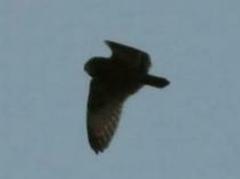 |
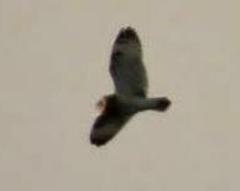 |
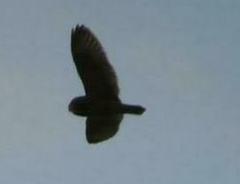 |
 |
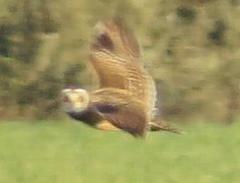 |

Generally if you want to know what is happening next at BOGS, or want to see the latest photos/reports,
you can find these on my "updates" page:
http://priscillanhk.com
Enjoy!
Priscilla



















































